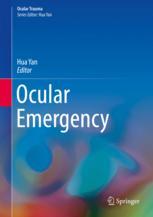

Most ebook files are in PDF format, so you can easily read them using various software such as Foxit Reader or directly on the Google Chrome browser.
Some ebook files are released by publishers in other formats such as .awz, .mobi, .epub, .fb2, etc. You may need to install specific software to read these formats on mobile/PC, such as Calibre.
Please read the tutorial at this link: https://ebookbell.com/faq
We offer FREE conversion to the popular formats you request; however, this may take some time. Therefore, right after payment, please email us, and we will try to provide the service as quickly as possible.
For some exceptional file formats or broken links (if any), please refrain from opening any disputes. Instead, email us first, and we will try to assist within a maximum of 6 hours.
EbookBell Team

4.3
58 reviewsOcular Emergency is a systematic, symptom based reference book for clinical practice guidance. This book aims to provide the most thorough knowledge and standard process to clinical practitioners, such as the nurses, medical students, residents, fellows and even ophthalmologists, to help them make the most appropriate decision on the management of patients who have suffered from urgent ocular conditions.
The first three chapters provide the audiences general information of ocular emergency and the emergency room (ER), which will help them generate a clinical thinking. The following four chapters are symptom based discussion of common complaints of ocular emergency. These chapters contain almost all the symptoms the audiences will meet in the ER and covers hundreds of diseases the audiences may or may not think of which fits the symptom. They will help the readers to make the right diagnose and offer the best advice or treatment to the patients. The last two chapters provide the audiences the information of most urgent ocular traumas. For each disease, definition, etiology, clinical presentations and signs, treatment and typical clinical case with pictures or illustrative figures will be provided. In addition, each chapter will be provided with an algorithym(s) for differential diagnosis and treatment as a summary of the chapter. Hopefully this book may help the clinical practitioners to be fully prepared for any challenge of ocular emergency cases.